Engineers use heat as a propellant management device, expanding CubeSat mission's lifetime by 30%.
Professor Álvaro Romero-Calvo and a team of Georgia Tech engineers have been selected by NASA for a TechFlights award — an effort managed by NASA’s Flight Opportunities program, which demonstrates technologies through suborbital and hosted orbital testing with industry flight providers.
In the Low-Gravity Science and Technology (LGST) Laboratory, led by Romero-Calvo, Georgia Tech engineers develop novel multiphase fluid management technologies for spacecraft by using electromagnetic and acoustic actuation mechanisms; and in this case, heat.
Boosting CubeSat Performance
“Many of the current generations of CubeSats are propelled by saturated cold-gas propellants (propellants that can be stored as a liquid-gas mixture, like butane in a lighter) and feature some of the simplest architectures you can have in a propulsion system,” explained Romero-Calvo. “We use propellant management devices (PMDs) to help position the liquid and maintain steady flow between the fuel tanks and the nozzles, but fitting everything in the limited volume in a CubeSat is challenging. Our approach helps alleviate that in a very simple way.”
When a CubeSat is in space the liquid propellant behaves very differently than while on Earth. This is also true for the gases on board. The propellant can slosh around the fuel tank creating an unstable environment and impacting the vehicle’s control system if not managed properly. Once the pressure in the tank drops and bubbles form, they can cause fluid dynamics disruptions like unsteady propellant flow and unpredictable thrust due to the lack of buoyancy.
Applying heat to the tank vaporizes the propellant, allowing engineers to move and position the liquid propellant to desired locations of the CubeSat propellant tank. The PMDs also allow steady flow to the thrusters which keep the CubeSat in desired alignments and orientations while navigating in swarm configurations.
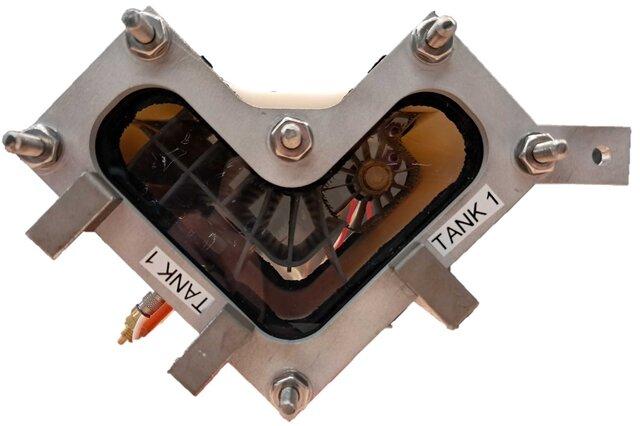
CubeSat propellant tank instrumented for flight. The thermal PMD is located at the top right corner. Further details here.
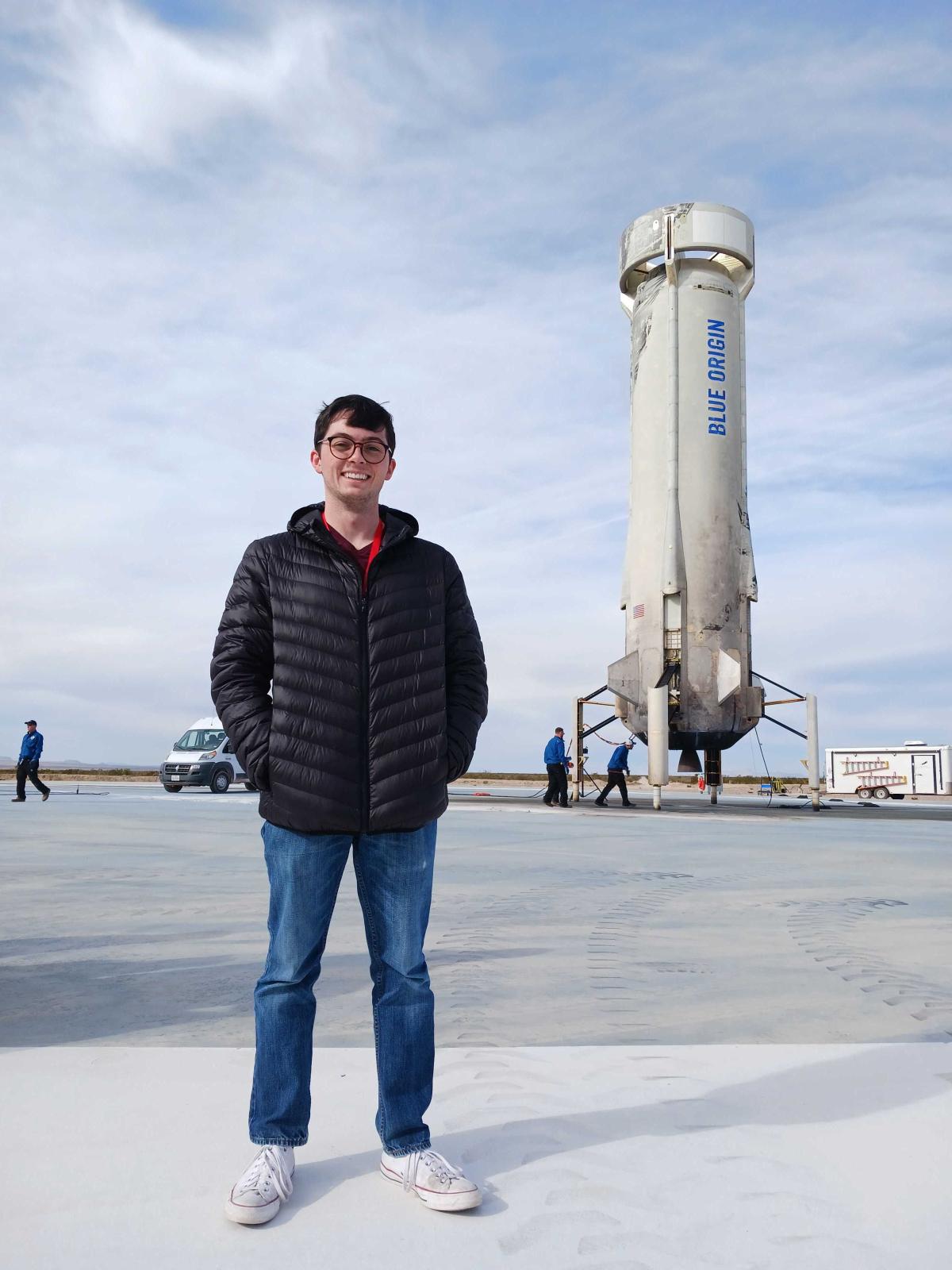
Hart in front of Blue Origin’s New Shepard suborbital rocket after the launch of the LGST Lab’s Magnetically Enhanced Electrolysis Experiment in December 2023
“Our approach allows us to fit about 30% more propellant than traditional devices could, so a single satellite, or even a swarm architecture, can have a longer mission lifetime,”
Samuel Hart, M.S.A.E. 2022, A.E. Ph.D. 2024 and lead contributor to the project.
Another added advantage to their method is the simplification of the PMD. Other approaches include multiple valves and sensors to accomplish the same task and often fail because there are so many points of failure that the system ultimately stops working.
“It turns out heaters are pretty reliable and lightweight. Our CubeSat has two heaters, so as long as they are working properly, it will only cost us about two or three grams of mass and almost no volume,” said Hart.
Testing 1…2…3…
Romero-Calvo, Hugh Chen, Hart, and Shay Vitale traveled to Jacksonville, Florida to work with Zero Gravity Corporation (Zero-G), a parabolic flight provider where researchers test their payloads in reduced gravity conditions.
The night before the flight test, the researchers discovered that their fuel tank’s power supplies were not working as designed. They had a late-night visit to Home Depot to buy drills and other tools to help them reconfigure the power diagram of their payload.
“I’ve been doing this for almost 10 years and no matter the facility, no matter the experiment, you will always find something that breaks down in the most inconvenient time right before a flight, and that was the case here,” said Romero-Calvo. “But because we knew our system so well and our team had been working on it day and night, in the end things worked the way they were supposed to,” said Romero-Calvo.
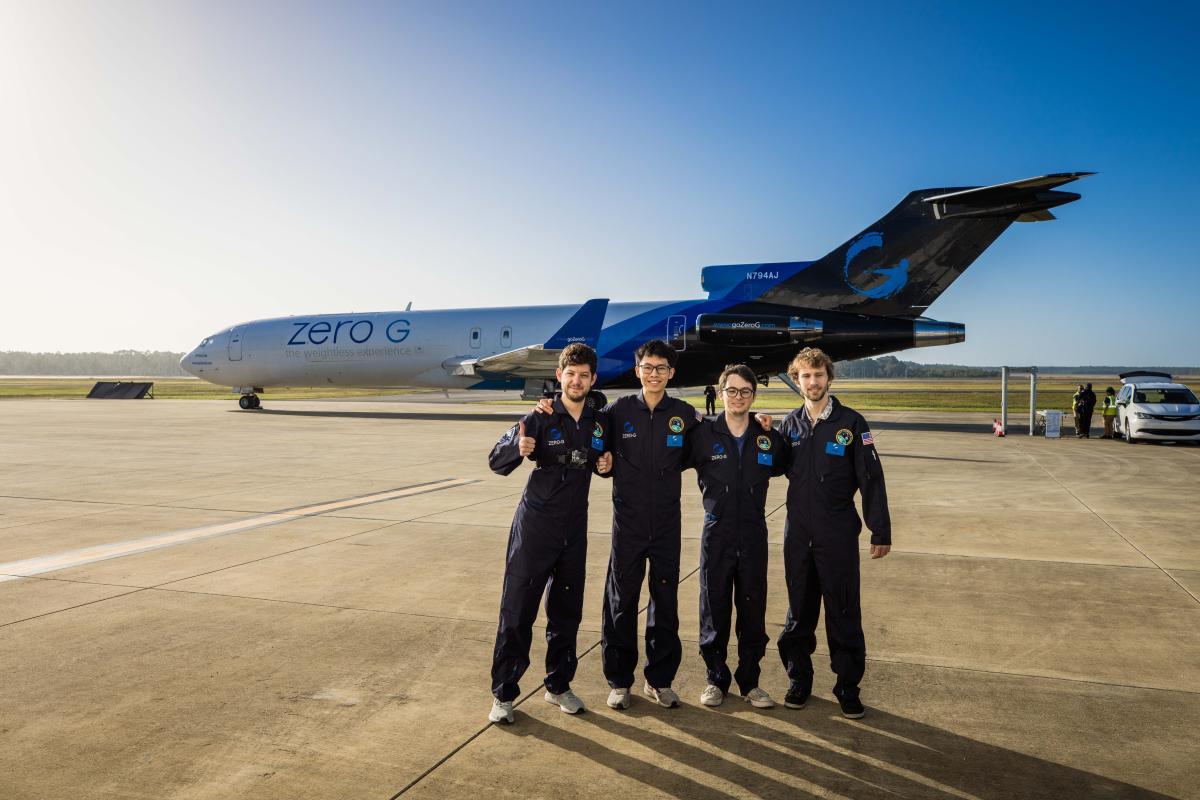
The team poses before boarding the modified B-727 aircraft to test their PMD. Left to right: Romero-Calvo, Chen, Hart, and Shay Vitale. Photo: Steve Boxall
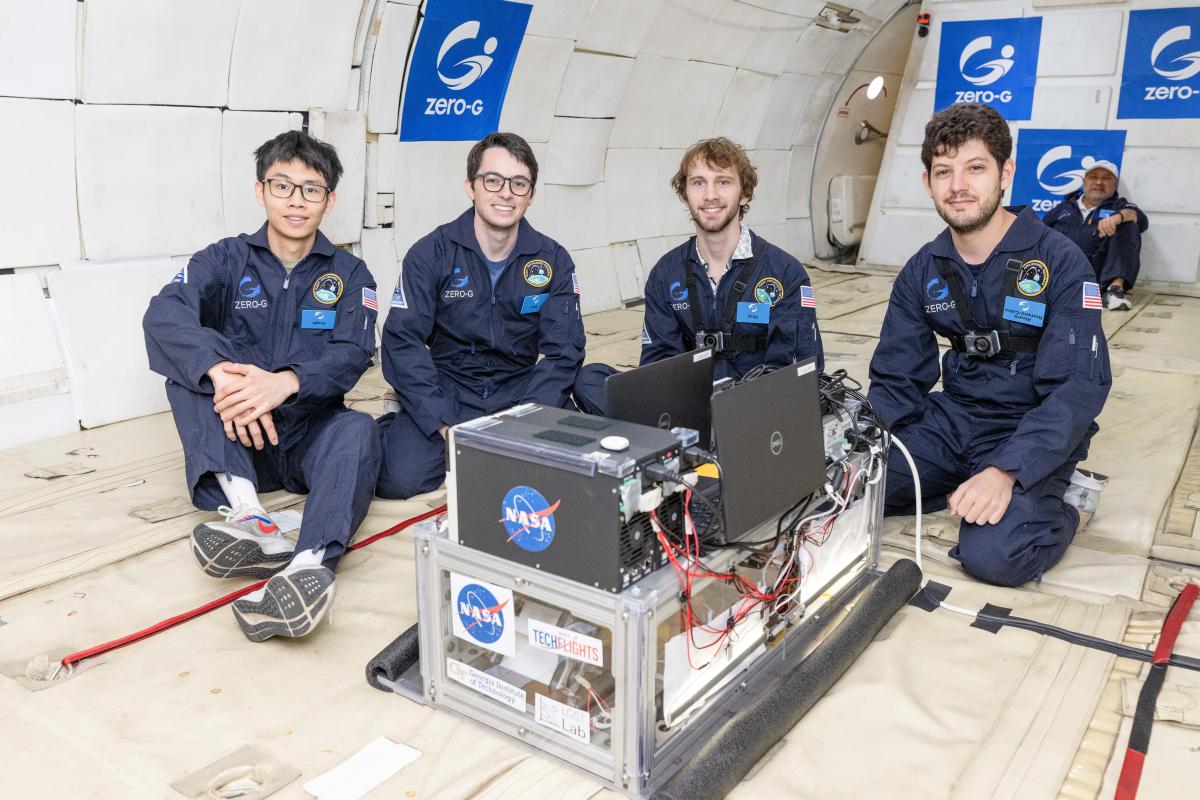
The crew poses with their experiments before taking off. Left to right: Chen, Hart, Vitale, and Romero-Calvo. Photo: Steve Boxall
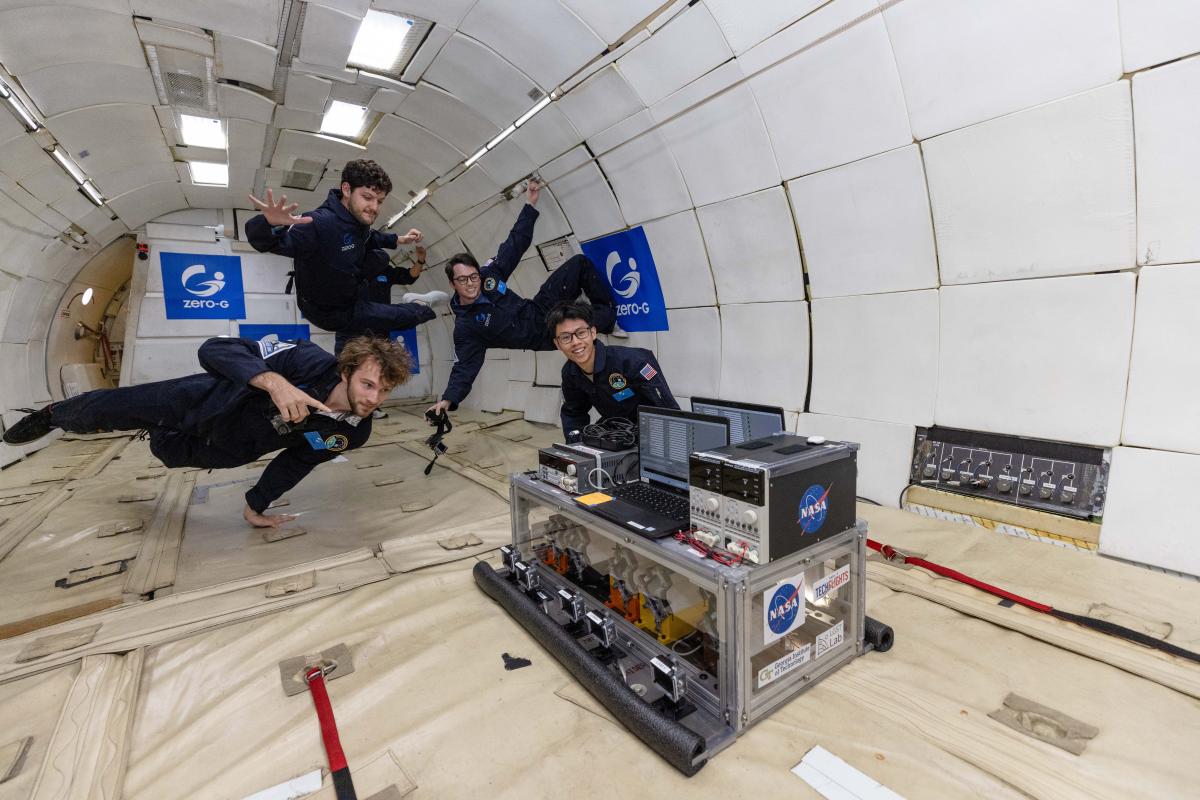
The team experiences micro-gravity while performing multiple CubeSat experiments. Vitale, Romero-Calvo, Hart, and Chen. Photo: Steve Boxall
They showed up to the tarmac and boarded a modified B-727 aircraft. This flight created a zero-gravity environment by following a specific flight path, known as a parabolic trajectory, or parabolas. The process starts with the aircraft flying level with the horizon at an altitude of 24,000 feet. Then the pilot gradually increases the angle to about 45 degrees relative to the horizon until reaching an altitude of 32,000 feet. During this phase, all on board feel the pull of 1.8 times the force of Earth’s gravity.
Next, the plane initiates the parabolic arc and the reduced gravity phase begins. For the next 20-25 seconds, everyone on board the plane experiences reduced gravity,
Finally, the plane pulls out of the maneuver, allowing all on board to gradually return to the padded floor of the aircraft. Throughout the process, Zero-G had individual flight coaches aboard calling out signals and ensuring overall safety.
During the Georgia Tech team’s flight test, this maneuver was flown 40 times, with 12 replicating the Moon’s gravity and 28 providing zero gravity. In total, the flight testing provided about 13 minutes of invaluable data.
Trial and Error
For this first trial, the research group’s goal was to show that cold-gas propellants can be repositioned in microgravity conditions by means of heat sources.
“We were a little bit ambitious and constructed five tank configurations in the mere four weeks we had leading up to our first test run,” said Chen, AE Ph.D. student. “For this project, we only have four flight tests, so we wanted to maximize the number of designs and testing we can do in this environment.”
Three of the five tanks were fully monitored, while two tanks, which Chen affectionately named ‘goofball tanks’, were used as the control group. The tanks included different types of thermal PMDs. At the beginning of each parabola, the PMDs were activated, and the liquid propellant began to vaporize near the tank outlet, generating a gas bubble.
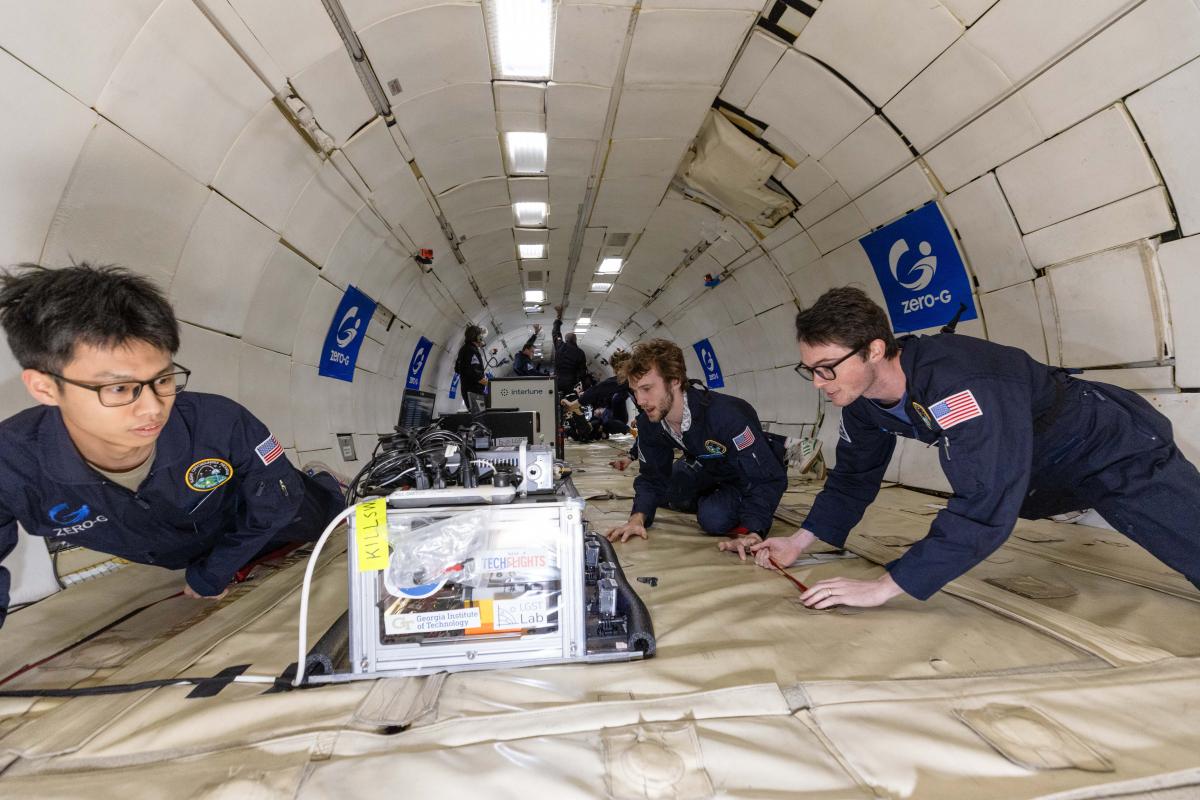
Chen (left), Vitale, and Hart (right) closely monitor the experiments during flight. Photo: Steve Boxall
In future applications, this gas will be extracted and fed to the nozzles of the CubeSat. At the end of the roughly ~20-second window of reduced gravity, the liquid moved away from the outlet due to the force of gravity, and the experiment was restarted at a higher pressure and temperature. This allowed the team to test a wider range of operational conditions, informing the design of future systems.
“It was scary at first because I’ve never been a fan of roller coasters, so the first two parabolas felt really wrong,” said Chen. “But then I got used to the predictability of them and could enjoy the weightlessness and then run the experiments during the zero-gravity sections.”
After a safe landing, they reviewed their data and saw that their technology worked as expected, but there were some hardware modifications they needed to address before their second flight test, which is scheduled for May 2025.
The team will continue testing this new propellant management approach in 2025, increasing the complexity of their experiments to reproduce more challenging operational conditions. With this initial reduced gravity demonstration, they are already planning to flight test the resulting devices in real CubeSat missions, bringing this technology from the drafting board to space in just a few years.
Related News:
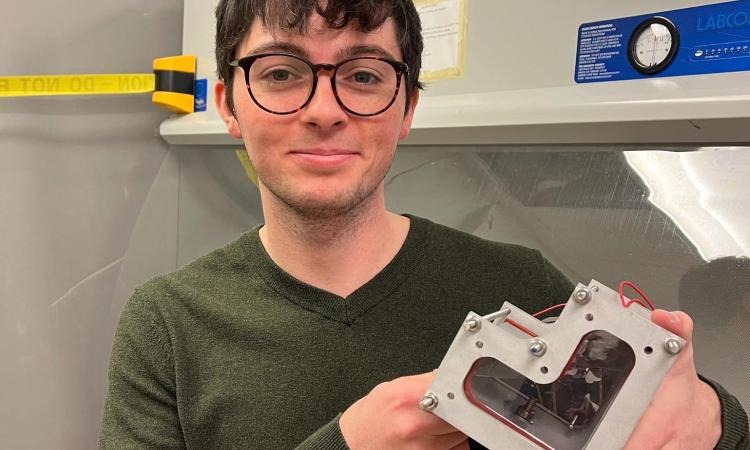
AE Graduate Student Wins Best Small Satellite Student Paper Award at the 2024 AIAA SciTech Conference
Researchers in the Daniel Guggenheim School of Aerospace Engineering are testing the best propellant systems for CubeSats to improve current technology.
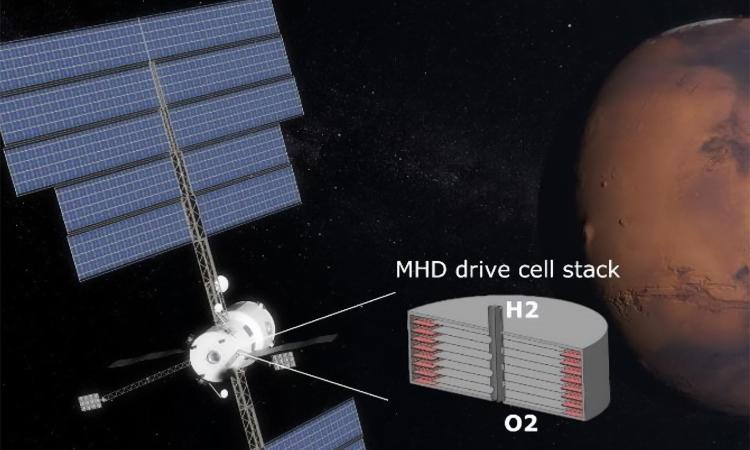
NASA Selects Professor Álvaro Romero-Calvo to Study New Magnetohydrodynamic Technology
AE Assistant Professor Álvaro Romero-Calvo will serve as the principal investigator on a NASA Innovative Advanced Concepts (NIAC) project to research an alternative system through a new, more efficient water-splitting architecture that combines multiple functionalities with reduced subsystems.
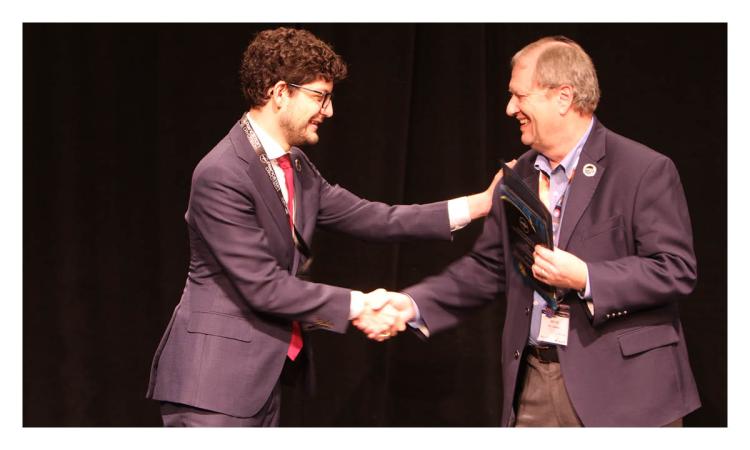
AE a Major Force in the Field of Gravitational and Space Research
Assistant Professor Álvaro Romero-Calvo recently received the Thora Halstead Early Career Award from the American Society for Gravitational and Space Research (ASGSR) for his research on low-gravity fluid mechanics.
